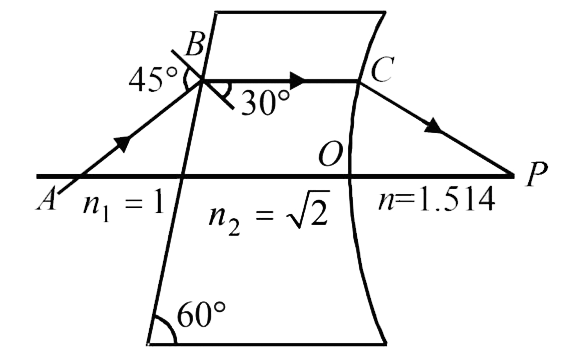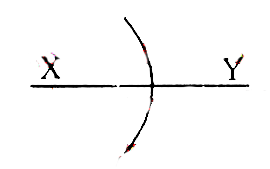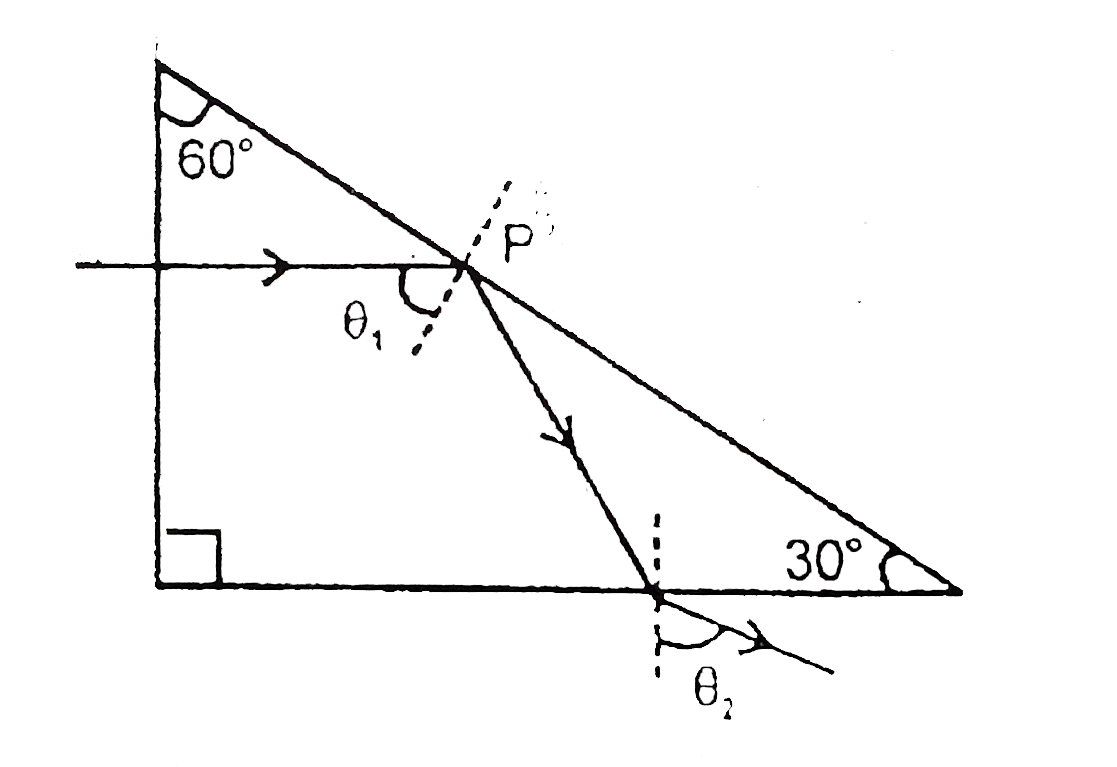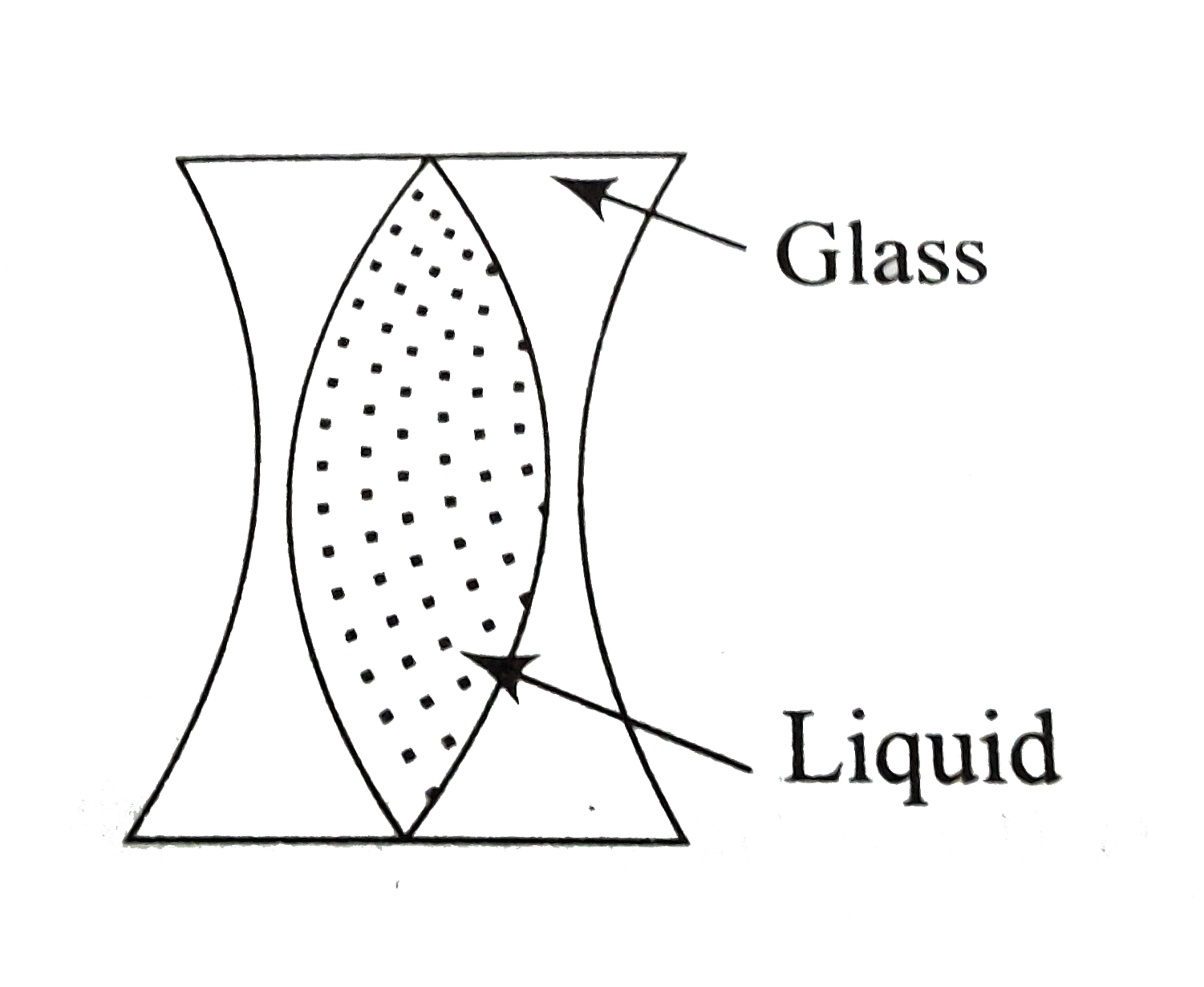Figure shows an irregular block of material of refractive indec √2. A ray of light strikes the face AB as shown. After refraction, it is incident on a spherical surface CD of radius of curvature 0.4 m and enters a medium of refractive index 1.514 to meet PQ at E. Find the distance OE up to two places of decimal.


Use Snell's law
n1sini=n2sinr
Here, n1=1,n2=√2,i=45∘,r=?
⇒sinr=1×sin45∘√2=12⇒r=30∘
The angle made by refracted ray at B with normal is 30∘. ∵Angle made by the firs surface with refracted ray BC is 60∘.
Hence the refracted ray at B is parallel to horizontal arrow.
∵ For refraction at spherical surface, u=∞
Now, n2v−n1u=n2−n1R
⇒1.514v=1.514−1.4140.4 or v=6.056m
∵ OP=6.056m
Topper's Solved these Questions
Similar Questions
A light ray is incident on an irregular shaped slab of refractive index √2 at an angle of 45∘with the normal on the incline face as shown in the figure. The ray finally emerges from the curved surface in the medium of the refractive index μ=1.514 and passes through point E. If the radius of curved surface is equal to 0.4 m. find the distance OE correct upto two decimal places.

View SolutionDetermine the value of the angle of incident for a ray of light travelling from a medium of refractive index μ1=√2 into the medium of refractive index μ2=1, so that it just grazed along the surface of separation.
View Solution
Knowledge Check
A concave spherical surface of radius of curvature 10 cm separates two medium x & y of refractive index 4/3 & 3/2 respectively. If the object is placed along principal axis in medium X then
 Aimage is always realBimage is real if the object distance is greater than 90cmCimage is always virtualDimage is virtual if the object distance is less than 90 cm
Aimage is always realBimage is real if the object distance is greater than 90cmCimage is always virtualDimage is virtual if the object distance is less than 90 cm
A ray of light incident on one of the face of a prism as shown. After refraction through this surface ray is incident on base of the prism. The refractive index of the prism is √3. The net deviation of the ray due to prism isA60∘ clockwiseB104∘ clockwiseC104∘ anticlockwiseD166∘ clockwiseParallel rays of light are falling on convex sphere surface of radius of curvature R = 20 cm as show. Refractive index of the medium is μ=1.5. A refraction from the spherical surface parallel rays
 Aactually meet at some pointBappear to meet after extending the refracted rays backwardsCmeet (or appear to meet) at a distance of 30 cm from the spherical surfaceDmeet (or appear to meet) at a distance of 60 cm from the spherical surface.
Aactually meet at some pointBappear to meet after extending the refracted rays backwardsCmeet (or appear to meet) at a distance of 30 cm from the spherical surfaceDmeet (or appear to meet) at a distance of 60 cm from the spherical surface.
A concave lens made of material of refractive index 1.6 is immersed in a medium of refractive index 2.0 The two surfaces of the concave lens have the same radius of curvature 0.2 m. The lens will behave as a
View SolutionA ray of light travelling inside a rectangular glass block of refractive index √2 is incident on the glass–air surface at an angle of incidence of 45∘. The refractive index of air is 1. Under these conditions the ray
View Solution
A ray of light is incident normally on one face of a prism as shown in figure. The refractive index of the material of the prism is 53 and the prism is immersed in water of refractive index 43, then
View SolutionA ray of light travelling inside a rectangular glass of block of refractive indx ×√2 is incident on the glass air surface at an angle of incidence of 45∘ . the refractive index of air is 1 . The ray will
View SolutionA liquid of refractive index 1.6 is contained in the cavity of a glass specimen of refractive index 1.5 as shown in figure. If each of the curve surface has a radius of curvature of 0.20m, the arrangement obehaves as a

View Solution
